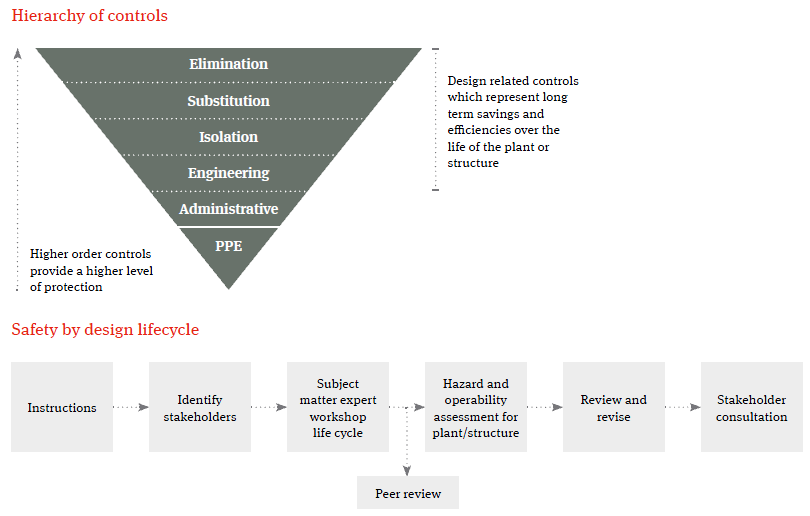
Publication
Insurance regulation in Asia Pacific
Ten things to know about insurance regulation in 19 countries.

Global | Publication | May 2016
The construction industry is inherently hazardous due to the nature of the work being carried out. As a result, the industry sees a high number and rate of work-related injuries, illnesses and fatalities. Similarly, “each year, a large number of fatalities occur in mines globally. Most of these fatalities occur in developing countries and rural parts of developed countries. Nonetheless, even in the United States an average of 93 people died in mining accidents during the period 1991-1999 ... Currently, China accounts for a large proportion of mining accident related fatalities, particularly in the area of coal mining” (Dhillon, 2010). This infographic seeks to present a snapshot of recent global trends in infrastructure, construction and mining safety by analysing critical risks in the sectors and reviewing recent accident data and case law on health and safety matters in these industries globally. We also provide some high level thoughts on risk management tools and proactive approaches in safety management given the data represented in the infographic.
In 2012, there were 1,500 workplace accidents in Ho Chi Minh City, killing 106 people, an increase of 13 deaths from 2011. Nearly 50% of these accidents occurred at construction sites.
A 2007 study of the construction industry in Thailand identified that the 4 most common types of accidents are:
Electrocutions are the fourth leading cause of death among construction workers in the United States. An average of 143 construction workers are killed each year by contact with electricity (based on US Government data for 12 years, 1992 through 2003).
More than 1 in 5 (22.2 %) fatal accidents at work in the EU (+Croatia) in 2012 took place within the construction sector.
A 2015 Eurostat report published that in 2013, the following number of fatal work accidents occurred in the agriculture and construction industry:
In the US, between 2003 and 2012, leading major causes of underground mining fatalities accounting for 90% of injuries:
Between 2007-2008 and 2011-2012 36 mining workers died from work-related injures in Australia.
On August 12 2015, the same day as the explosion in a Tianjin chemical warehouse, a vanadium mine in the Shaanxi province collapsed and buried at least 65 people under a landslide.
Although safety in the Chinese mining industry has undergone significant improvements, it still has one of the highest incident rates across the world:
An Australian mechanical engineering student investigated international mining fatality databases and found that:
“the main root cause of death in mining operations as seen from the review is Fall of Roof/Sides/Highwall and accounts for approximately 24% of all mining fatalities. Unintended Operation of equipment follows second accounting for 13% of all mining fatalities and Fall from Heights third at 9%” (MacNeill, 2008)
“Certain risks, while remote, have such severe consequences that they deserve attention disproportionate with their risk score [under the traditional risk management approach]. In the safety context, fatal risks fall in that category. These risks are called critical risks.” “While critical risks are often defined as low frequency, high consequences events, they are better understood as risks of a catastrophic event, regardless of the likelihood. A high frequency, high consequence event does not cease to be critical; it is just that the traditional risk management approach operates effectively to address it. By contrast, traditional risk management is ineffective in managing high consequence, low likelihood events because the low likelihood disguises the nature of the risk. However their catastrophic consequences make them a priority for the officers of the organisation.”

| 1 | 2 | 3 |
|---|---|---|
| Identify your organisation’s critical safety risks | Review controls in place for managing your critical safety risks, ensure multiple redundancies for resilience and realign systems where necessary | Review controls in place for managing your critical safety risks, ensure multiple redundancies for resilience and realign systems where necessary |
Two explosions at a port containing flammable and hazardous chemicals killed approximately 147 people on 12 August 2015. Investigations into the cause of the blast continue, however BBC reported that calcium carbide may have been exposed to water that was being used to control a blaze, creating a high explosive gas blast which may have then detonated other chemicals.
It has been reported that authorities found 3 waste water discharge monitoring stations in the evacuated area which revealed excessive levels of cyanide. One station recorded a level that was more than 27 times the standard limit. At least 1 employee of Tianjin Dongjiang Port Ruihai International Logistics has been arrested.
Key lessons
Ensure there is no risk of hazardous substances reacting to cause an explosion. Enforce strict policies monitoring the levels of such substances.
The 2010 Upper Big Branch coal mine explosion in West Virginia, US, lead to the deaths of 29 workers. David Hughart, a former executive of Massey Energy pleaded guilty to concealing safety violations from federal inspectors and was sentenced to nearly 4 years in prison and 3 years of supervised release for all of the offences linked to the disaster.
“The basic mechanics of the explosion were aided by the mine’s poor ventilation, inoperable sprinklers, worn and unmaintained equipment, and inadequate rock dusting. These conditions, in turn, were the product of the criminal corporate culture at Massey Energy, which placed production ahead of miners’ health and safety.”
Key lessons
A focus on critical risks and their management is required to avoid catastrophic disasters.
A New Zealand underground coal mine on the West Coast of New Zealand’s South Island exploded in November 2010, killing 29 men immediately or shortly afterwards from the blast or toxic atmosphere.
“The company did not have a clear strategy from the board that set out its vision, objectives and targets for health and safety management... The Pike health and safety management system was never audited internally or externally. If it had been, deficiencies would have been identified, including the gap between the standards and procedures laid down in the Pike documents, and the actual mine practices.” (Royal Commission on the Pike River Coal Mine Tragedy, 2012)
Key lessons
Audit systems to ensure they are effective.
A swing stage platform and associated rigging components detached, falling 26 levels from the side of a high-rise building under construction on Australia’s Gold Coast, leading to the death of two employees working on the work platform.
““The swing stage suspension system installed was not consistent with either the information contained in the manufacturer’s documentation nor the relevant Australian standards. In short, the gross deficiencies identified shows that the method of construction – rather, the method of connection between the counterweight box and the swing stage suspension needles was woefully inadequate.”” (Department of Workplace Health and Safety
In light of Allscaff Systems’ “gross negligence and foolishness”, it was fined $700,000. The Allscaff officer, Mr Smith, received a suspended sentence of 12 months imprisonment.
Key lessons
Identify all standards relevant to your operations and apply them.
On 29 August 2012, a gas explosion inside a coal mine in the Sichuan area killed 45 workers. A further 54 were injured. The Government had announced in May 2012 that it would shut down 625 coal mines by the end of the year, in an attempt to minimise the dangerous conditions faced across the country. According to the director of the State Administration of Coal Mine Safety, the carbon monoxide levels in the tunnel where the miners were trapped was high and the roof was collapsing. The rescue was therefore very difficult.
Key lessons
Design and implement ventilation systems that will ensure the health and safety of workers, particularly in emergency evacuations.
A worker died in April 2014 when a minidigger fell from the 2nd floor of a 6-storey building in Mayfair, London to the 1” floor below. The building was undergoing demolition work to be converted into residential property when a mini-digger demolishing a concrete floor slab of approximately 12 square metres fell, crushing the worker. The operator of the mini-digger was also taken to hospital with minor injuries.
Key lessons
Consider design of operations where there is interaction between different work crews and coordinate activities.
Consider effective use of exclusion zones.

Publication
Ten things to know about insurance regulation in 19 countries.

Publication
A recent decision made by the UK's Advertising Standards Authority (ASA) brings into sharp relief the challenges for airlines to strike a balance between marketing their sustainability efforts in an understandable and compelling way, whilst avoiding criticism for “greenwashing”.
Subscribe and stay up to date with the latest legal news, information and events . . .
© Norton Rose Fulbright LLP 2025